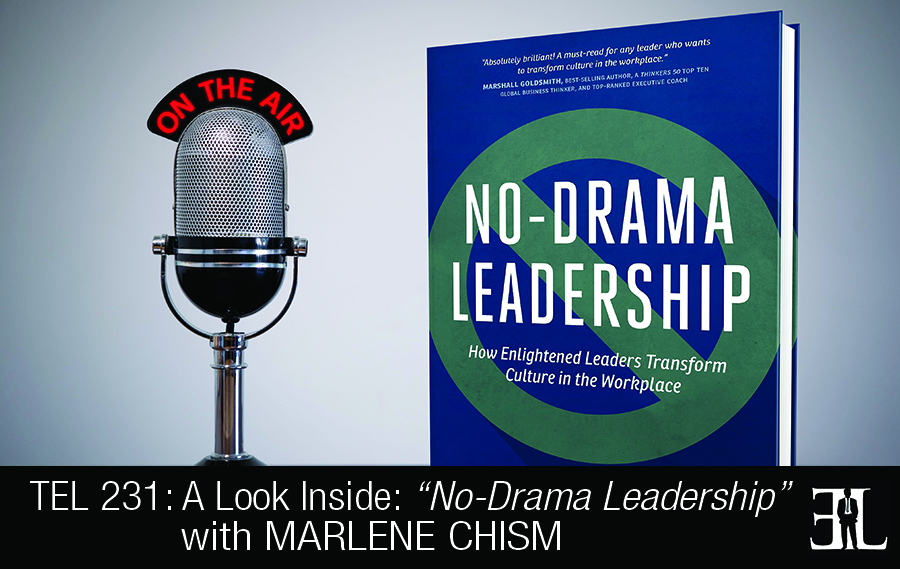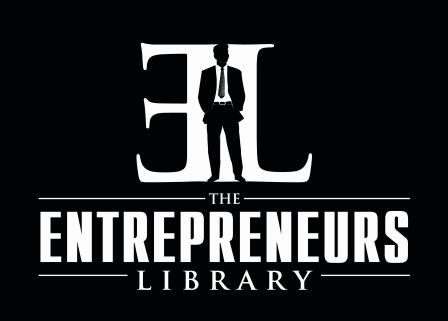TEL 231: No-Drama Leadership with Marlene Chism

A summary of things you should know about No-Drama Leadership according to Marlene Chism:
Introduction
In this episode Marlene Chism takes a deep dive into her book, No-Drama Leadership, where she discusses how enlightened leaders transform culture in the workplace.
In her book Chism provides you with the practical skills to become a more enlightened leader through real-time examples, case studies, and checklists from some of the most successful leaders in the world. The goal of the book is to teach you how to improve your leadership effectiveness, establish accountability in any workplace, communicate strategically, and increase employee engagement.
This book is perfect for entrepreneurs who manage a team of employees and are having trouble keeping their emotions aside when it comes to making hasty leadership decisions.
The Book’s Unique Quality (3:09)
We start to work as leaders with the environment to change the identity of those even in the first level (Supervisors, new leaders) so that they more easily identified with being a leader. I think another differentiator is that I am a female writing about leadership, not from a feminine perspective, but rather from a universal perspective. At the core, leadership is as much about a way of being and not just a way of doing, especially in the world in which we are living today.
The Best Way To Engage (4:31)
You can jump in to any chapter but I have designed it where it all works together and so there are a lot of different ways for a reader to engage with this book.
The Reader’s Takeaway (14:22)
I want the readers to have the understanding that if today’s leadership, if it’s about anything, it’s about alignment.
A Deep Dive Into The Book (6:22)
The book is divided into three sections. The sections are The Will to Be, The Eyes to See, and The Power to Create.
In The Will to Be, the first section, I’m making the statement that the enlightened leader has the will to be aligned, aware, and accountable. In this section I talk a lot about will verses willingness, desire and so on because what I have learned is that you can’t want something for someone that they don’t want for themselves. If there is no desire to be a certain way, if a leader does not claim their values, there’s really nothing to align to. So alignment, awareness, and accountability all work together. Alignment being a major component that threads throughout the entire book with the understanding that before alignment comes clarity. I make the framework for awareness in a way that is really easy to grasp and divided it into four different types of awareness. The four types are self-awareness, other awareness, cultural awareness, and spiritual awareness. I make a big distinguish in this book between responsibility and accountability with the understanding that, until there’s real ownership, accountability just serves as a way for people to cheat and skew the numbers. When people truly accept ownership through responsibility, accountability becomes a wonderful tool to course correct quickly.
In section two, Eyes to See, the idea is that enlightened leaders have a sixth sense about how to see things and so they see communication differently. These leaders are very committed to their communication, they see it as a critical skill and they see it as a strategy understanding that from the bigger perspective it’s better to get along with people and be upfront about your intentions.
The last section is The Power to Create and the understanding here is that enlightened leaders see themselves as co-creators or creators. Enlightened leaders see other people that way as well so they work collectively to create the right environment, the right engagement, and the right empowerment.
NOTE: That was just a summary. To get the full deep dive, play the audio clip at 06:22
Notable Quotes From The Book (15:05)
“If the company sees the employ as a cog in the wheel the employ sees the company as a paycheck.” – Marlene Chism
The Credibility/Inspiration Of The Author (1:04)
I am a consultant, an international speaker, and the author of three books which two have been commercially published, STOP Workplace Drama and No-Drama Leadership.
The inspiration came from my first book, STOP Workplace Drama, and the success of it. I was inspired to write this book for the upper level executives and business owners, not only for their own development but to see from the mountaintop why we need to change the definition of leadership.
Other Books Recommended By The Author (18:06)
The Power of Full Engagement by Jim Loehr and Tony Schwartz
More Information About This Book and The Author
Buy No-Drama Leadership by Marlene Chism on Amazon today
Visit MarleneChism.com to learn more about Marlene and her book
Follow Marlene Chism on Facebook and Twitter
More Information About This Episode
Download the full transcript here (coming soon)
Listen on iTunes, Stitcher , and SoundCloud
Related books:
The Discomfort Zone by Marcia Reynolds
The Front-Line Leader by Chris Van Gorder
The Top Ten Mistakes Leaders Make by Hans Finzel
Relevant advice and tips:
5 Characteristics of A Great Leader
What did you like and not like about this episode? Fill out this one minute survey here.
 The Entrepreneurs Library
The Entrepreneurs Library














